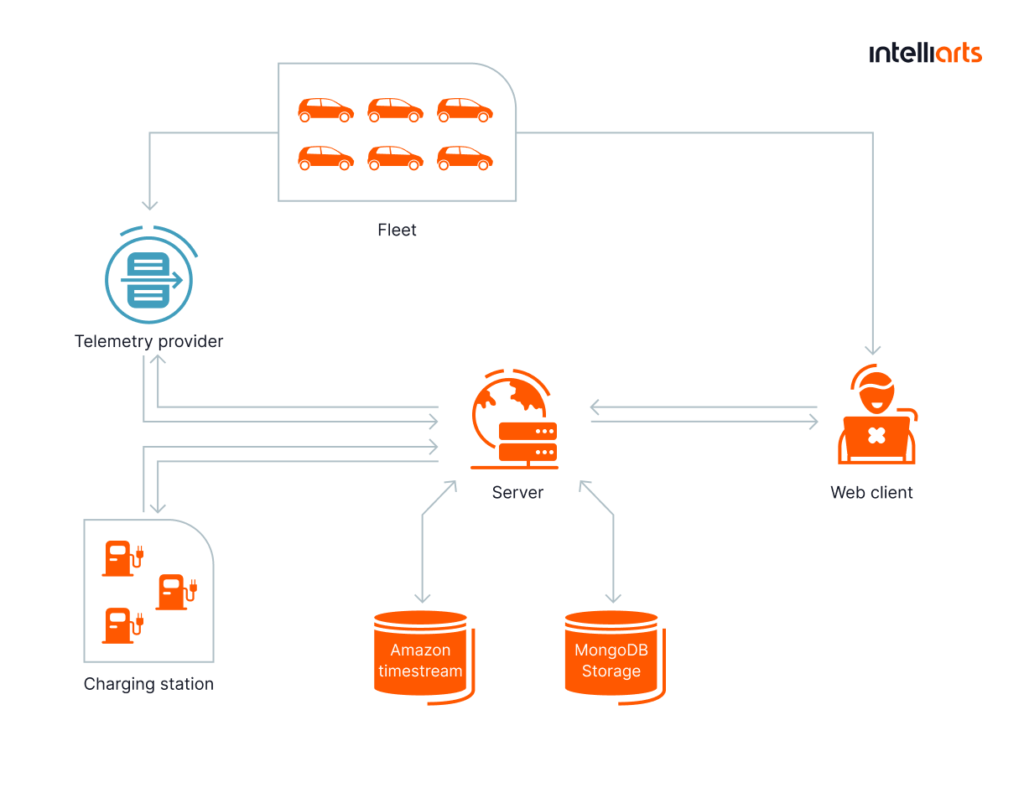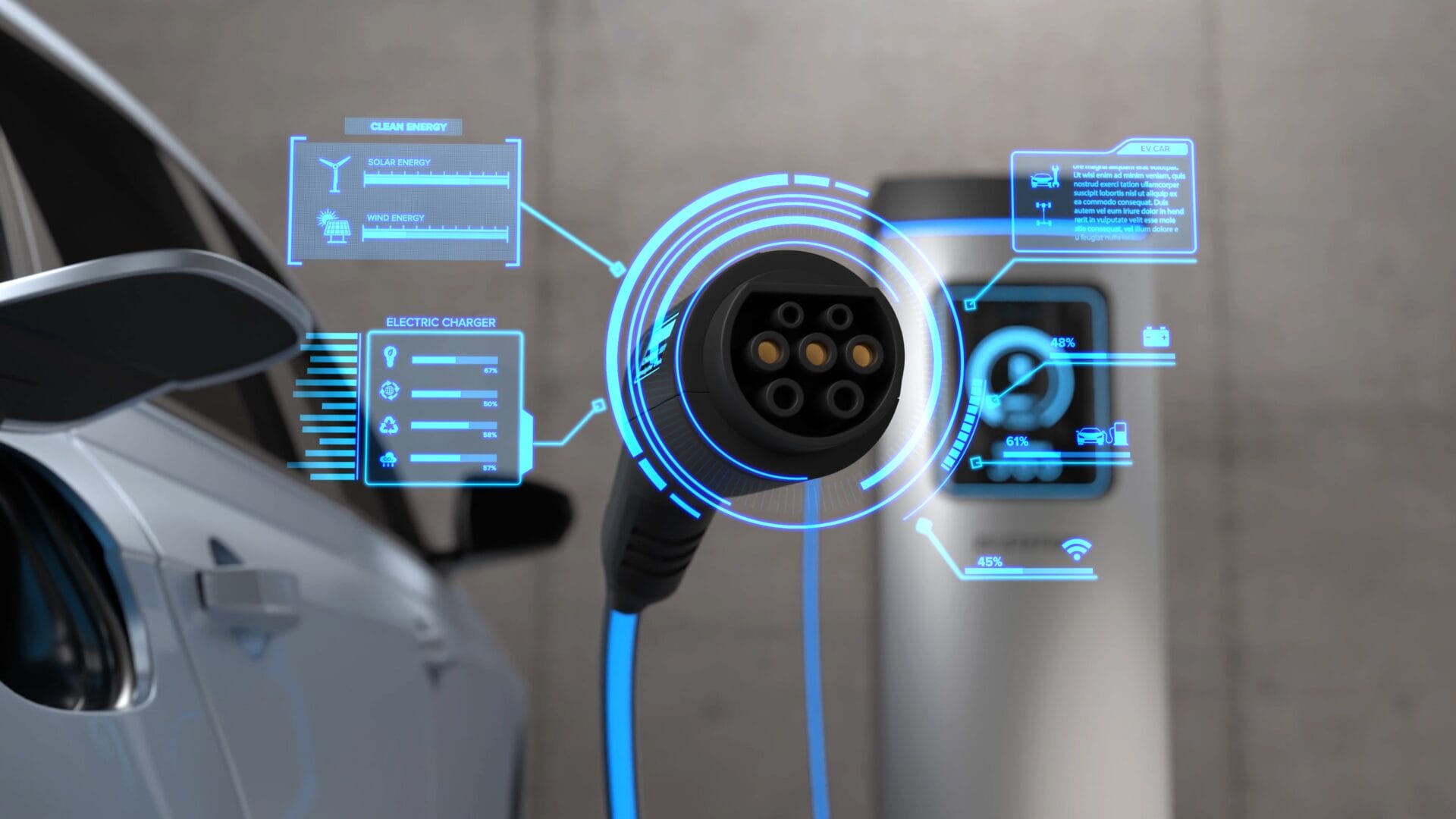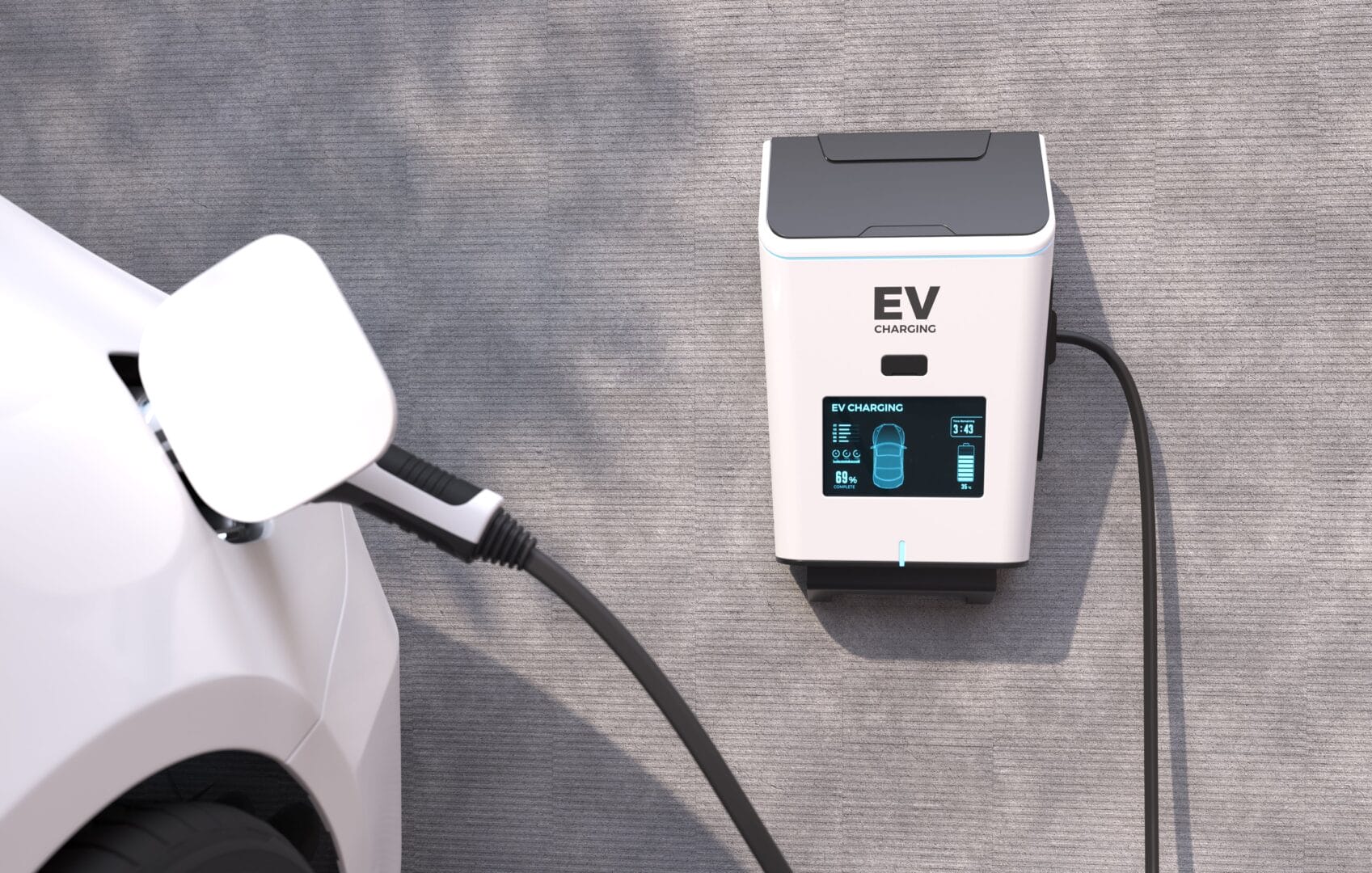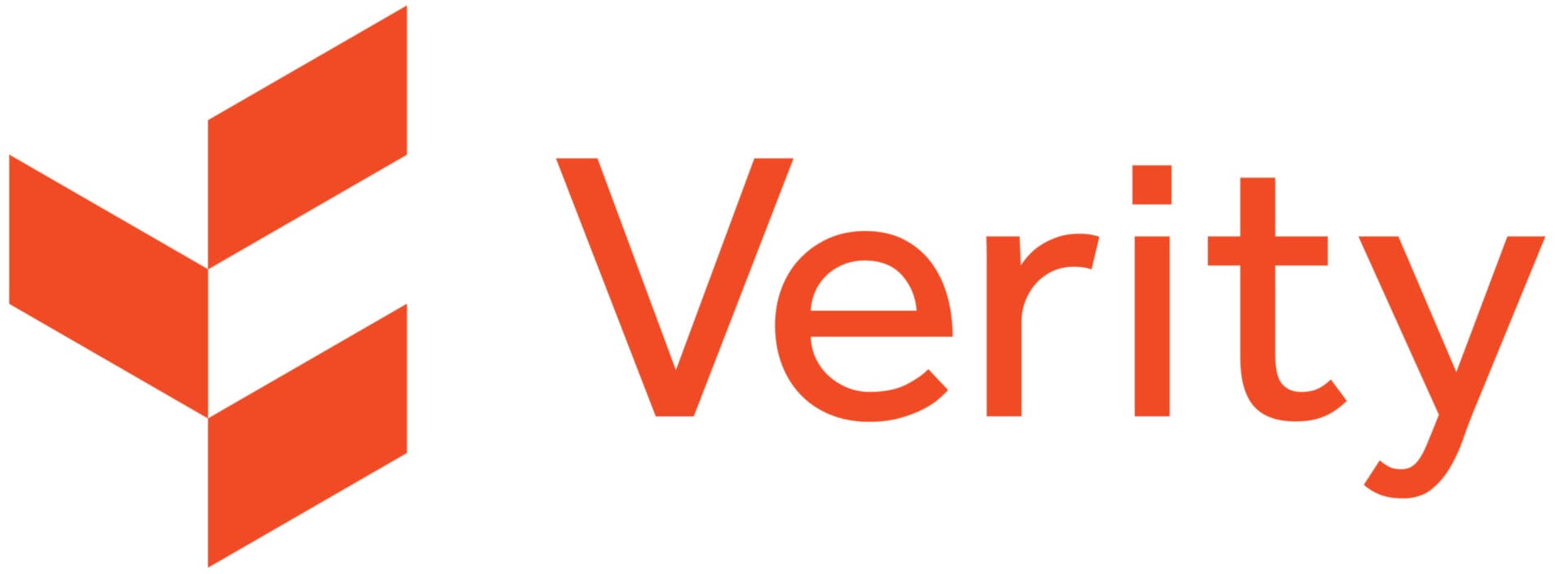Solution Highlights
About the Project
Customer:
Through its innovative and accessible charging platform, our partner helps with the set-up, management, and optimization of Electric Vehicle (EV) charging stations. The company delivers premium EV charging experience across the entire value chain, from installation to driver support.
The Intelliarts team has been collaborating with this EV charging company for the last few years. We assist the customer in building quality EV fleet management solutions to provide a seamless experience to EV drivers.
Challenges & Project Goals:
The EV charging company has planned to expand into the new fleet management market so they came to Intelliarts with the request to build electric vehicle fleet management software. This enterprise solution had to allow EV fleet operators to keep track of their fleets and charge vehicles effectively, regardless of whether it was depot charging, on-route, or at-home. In the long run, the software should help EV fleet managers as the end users lower fleet operating costs and improve efficiency.
Solution:
At the end of the project, the Intelliarts team delivered the electric vehicle fleet management software that helped fleet operators install and maintain EV charging infrastructure and ensure the best charging experience for EV drivers. The software covers all the top EV fleet use cases, from real-life charging and EV statuses to energy management to reports and billing.
SaaS Development
It has been the privilege of my career to work with such a dedicated and capable team. EV Connect’s ability to continue to win business in an increasingly competitive market is a testament to the foundation laid by Intelliarts.
Erik Mattheis
E-Mobility Software Expert @EV Connect
Technology Solution
The EV fleet management system that we built over the course of cooperation with the customer offers fleet owners a way to control and manage their fleet in the most efficient way. Here is a summary of how the Intelliarts engineers implemented the project step by step.
Basic management functionality
We started the electric vehicle tracking app development by making it possible to add a set of vehicles to the partner’s EV charging management platform. The vehicles had RFIDs linked to the car keys. RFID (Radio Frequency Identification) represents the technology that helps to tag and identify objects. Most charging stations use this technology in order to track the vehicles.
With the help of data analytics, we also showed up on the dashboard what EV exactly was being charged, its charging station, the battery charge level, and other basic information.
Telematics
Our next step was to integrate telematics, the idea of which is to collect data and share it wirelessly. It’s actually a device that merges telecommunications and informatics to share the data further for fleet operators to make decisions based on it. As a part of our third-party integration, we chose Geotab, which collects various types of car data, including speed, acceleration, engine performance, the battery charge level, and energy consumption. This data was important for our specialists to predict charging operations for EVs.
At some moment, we met the difficulty that Geotab was focused on cars only although we had EV buses as our fleet users too. The engineers solved this challenge by integrating another telematics solution, NFI Connect, which was optimized for public transport. The new tool collected data about charging operations of public transport, the bus location, etc., which was exactly what we needed for monitoring buses.
Energy management
One of the most interesting phases in this project was the integration of EV fleet management with smart energy management, another solution of ours. The energy management system served for power limit scheduling for EV stations for more efficient energy use and utility bill optimization.
We wanted to achieve the same for fleet owners, but here there was a challenge with prioritization of charging. To put it otherwise, our experts had to solve the puzzle of what vehicles to prioritize for charging in case a specific vehicle had to be charged faster and when we had power limits for this exact location.
To make it possible, we decided to benefit from telemetrics again by using the data about battery charge levels and a set of planned routes. The route showed the information on how far the vehicle was planned to drive and at what time it was going to leave the depot. Based on this data, the load management system prioritized charging one vehicle over others, increasing the energy limits so it could charge on time.
By the end of this development stage, the solution allowed users to check:
- The EV charging status like whether the vehicle was at the charging station, parked, or driving elsewhere
- The status of EV charging stations like whether there were any available
- Data analytics and predictions like the current battery level and the predicted one, at-risk situations like whether the EV would manage to charge to the required level by the time the vehicle had to leave, etc.
At-home charging
Finally, our partner wanted to expand the charging opportunities for EV fleet operators, such as by adding tracking battery charge levels. So adding an at-home charging feature was the next big phase of development. The core challenge here was to provide means for fleet owners to compensate the costs of at-home charging to EV drivers.
Telematics was useful here as well. The solution checked the location of the EV vehicle, and we knew when it was charging and when it happened outside the depot. The system also tracked the EV driver’s home address so we could check whether the vehicle was located there.
Due to telematics, we also received information about the amount of energy consumed by the EV. Based on this, the system requested a tariff from the electricity provider, i.e., the cost of electricity for a specific day/time. In the end, we calculated the costs of charging and prepared a report for EV fleet operators so the end users knew how much they should compensate.
Business Outcomes
Looking for ways to increase its client base and win the loyalty of fleet owners, our partner joined the effort with the Intelliarts team to craft the next-gen electric vehicle fleet management system. Now this solution grants EV fleets with:
- Greater operational efficiency: The software enables real-time station monitoring and simplifies fleet charging. For instance, it can help the company optimize charging schedules and prioritize vehicles for better efficiency and reliability. In the long run, this allows fleet managers to reduce downtime and lower maintenance costs.
- Charging flexibility: Users can choose between charging at the depot, on-route, and at-home. Importantly, the solution provides the means to compensate the costs to EV drivers in case of at-home charging.
- Cost reduction: The EV fleet management solution brings great cost optimization opportunities, from longer equipment lifetime to better maintenance to wiser energy consumption at peak hours.
- Real-time data analytics: EV fleet operators receive meaningful insights about their operation, including charging schedules, expenditure for energy consumption, and others. Later on, these could be used to enforce decision-making.













